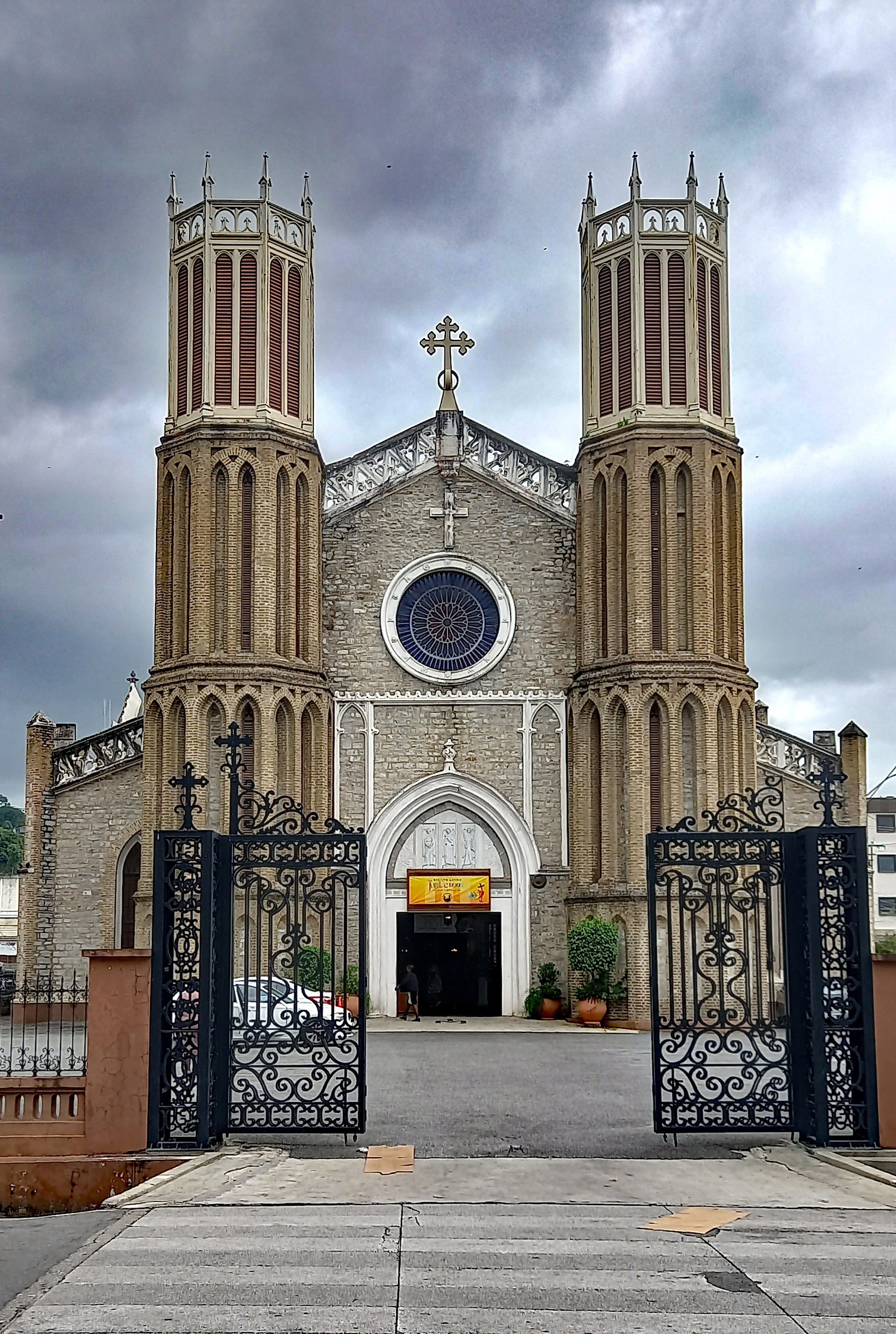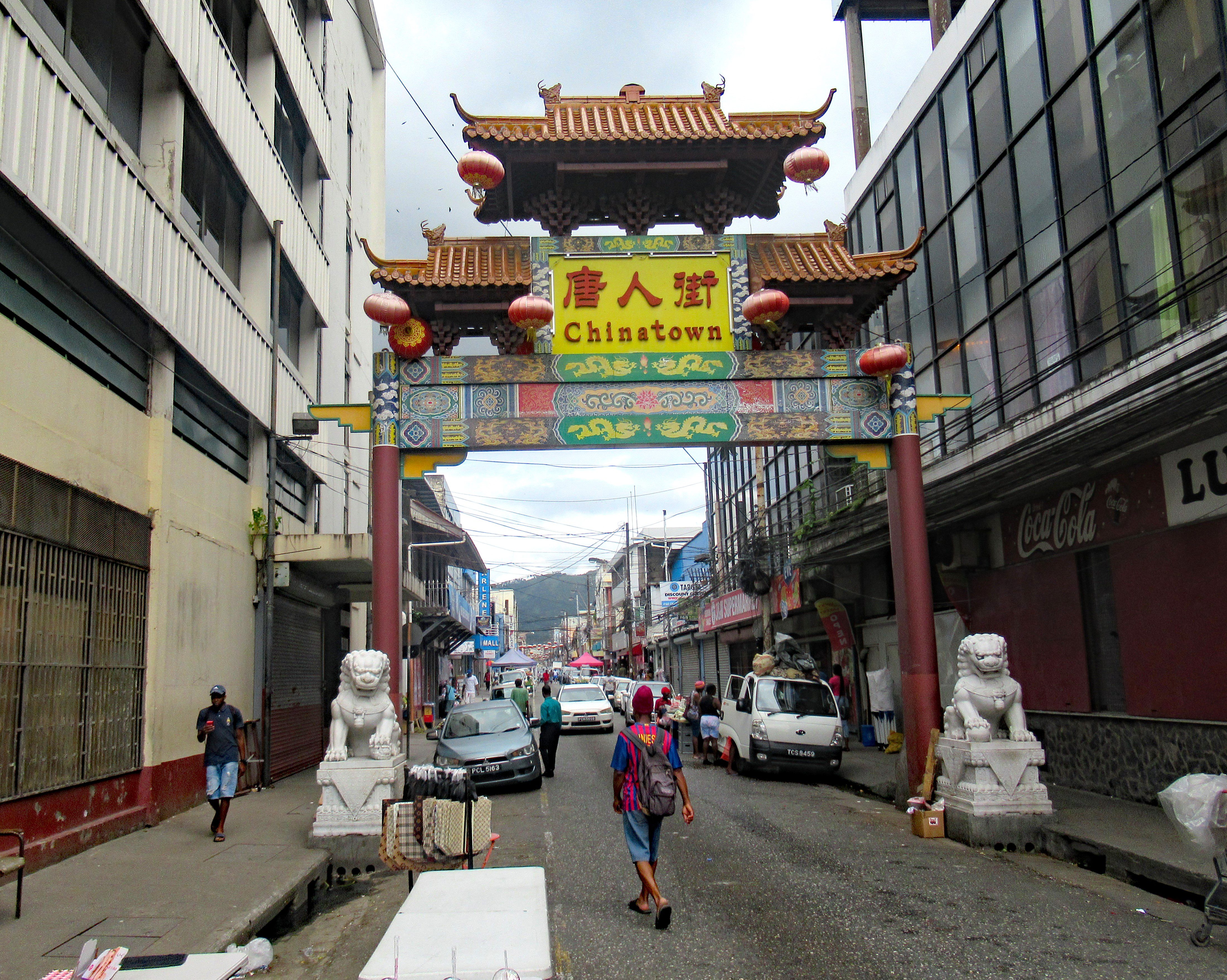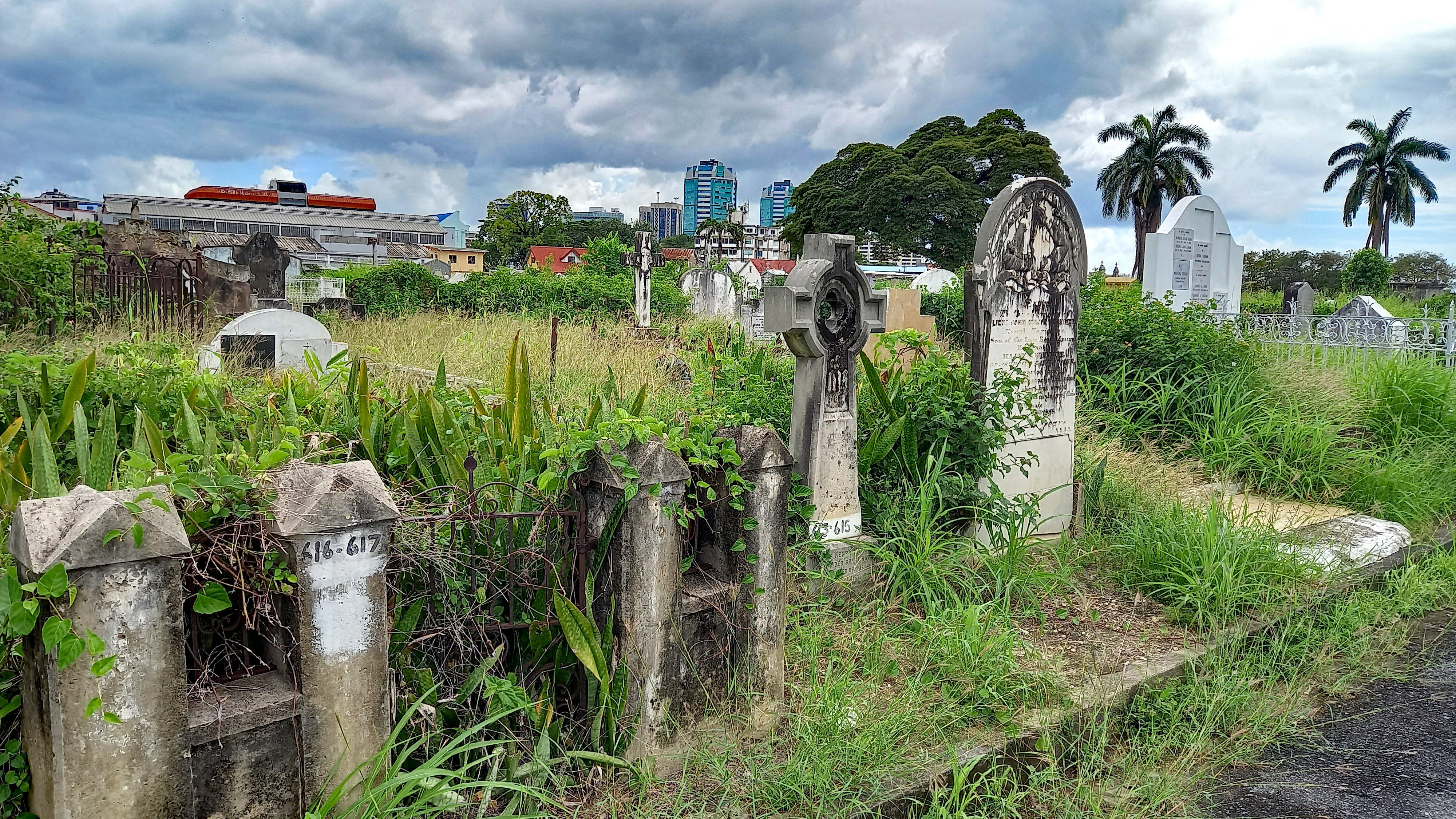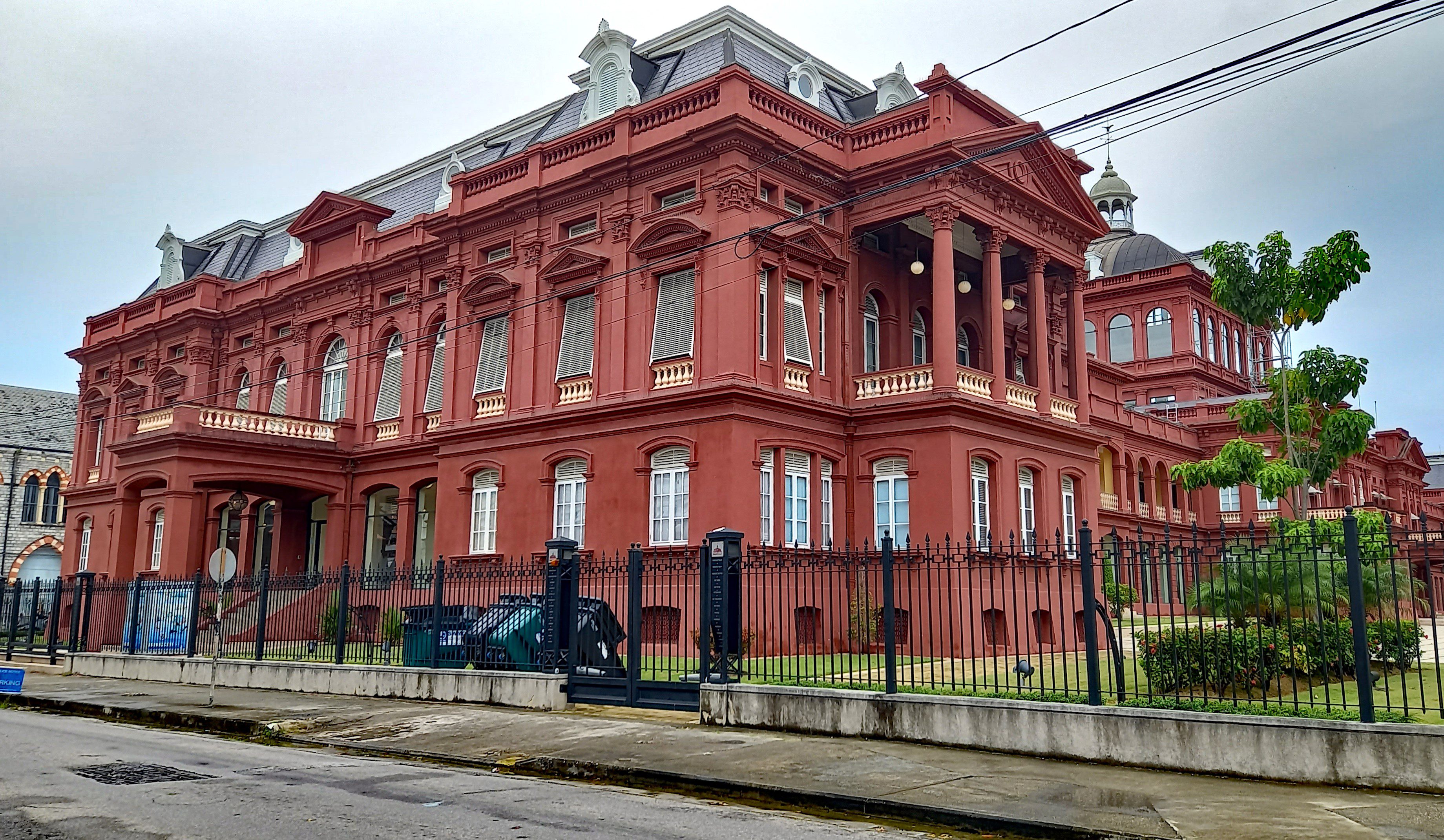The Downtown area of Port of Spain, Trinidad’s capital, is nestled between the Queen’s Park Savannah and Gulf of Paria. Following a whirlwind sightseeing tour by car, we explored at a more leisurely pace on foot, after checking it was safe for us to wander solo.
We explored several parks and squares.
Woodford Square, built in the early 19th century, was named after Trinidad’s longest-serving British Governor, Sir Ralph Woodford, with its paths forming the shape of the Union Jack. It was the largest square in the area, with a cast-iron fountain and colonial-era bandstand and whilst it’s said to resemble Hyde Park’s Speakers’ Corner, the debates are held at a rather unsociable 7am. However, the biggest attraction were the buildings surrounding it: the gothic-style Holy Trinity Cathedral on the southern side and opposite it, on the northern edge, the ugly concrete monstrosity, the Hall of Justice, and the Dr Eric Williams Memorial Library. On the western side were two colourful buildings: the aptly named Red House or Parliament building, and the beautiful blue Old Fire Station, now housing the National Library.
Memorial Park commemorates Trinidadian veterans who served in World Wars I and II. The cenotaph, topped with an Angel of Victory, was made from Portland stone shipped from the UK.
Victoria Square was another park where locals were taking advantage of the green space to socialise and exercise.
A long, east-west strip of land, previously called Plaza de la Marina and Independence Square, was now known as Brian Lara Promenade, where at one end, we found a bronze statue of the cricketer. At the opposite end stood a statue of Christoper Colombus in a square named after him, which had been donated by Hypolite Borde, a wealthy cocoa proprietor. There was a visible join between body and head as the latter had been stolen and gone missing for several months. It was either thought to contain valuable materials or an attempt to erase the colonial past. Running parallel and northwards in order, were King Street, Queen Street, Prince Street and Duke Street.
While not strictly speaking a park, Lapeyrouse Cemetery was a walled burial ground dating back to 1813. The variety of tombs, adorned with gothic spires and angels, were according to our guidebook the resting place of several notable Trinidadians. Unfortunately, without any further information, they were impossible to find in the jumble of graves and heat of the day. As we’d discovered whilst exploring the district of Belmont, it was yet another good example of the country failing to make the most of its heritage.
The Church of the Immaculate Conception had undergone extensive restoration work from 2012 to 2015. According to our Rough Guide, 16 stained glass windows were added in the 1980s depicting the country’s many ethnic groups, and these were said to be a real highlight. I could only find some rather small windows with geometric shapes and having shown my book to a volunteer she commandeered a reluctant colleague to lead us back into the church and let us through a barrier of chairs to the altar. Here we found a large stained-glass window depicting a single religious scene: we said how lovely it was, and despite us failing to find the windows, put $5 in their donation box to thank them for their efforts. We were pleased we’d done so, as on leaving there was a downpour, so we didn’t feel guilty about taking refuge in their porch.
Walking down Charlotte Street, we came across an arch denoting Chinatown with two large stone guardian lions on either side but failed to find any reference to the area in our guidebook. We later discovered that in 2019 the street was renamed as part of a government initiative to ‘twin’ Port of Spain with Shanghai and provide economic and tourism benefits. The city had seen several waves of Chinese immigrants, with the most recent being the late 1970s when China started opening up to the outside world and many set up shops, selling a wide range of goods, down Charlotte Street. Unfortunately, on a Sunday morning, it was not exactly heaving and felt a little seedy.
On August 1st, 1834, Governor Sir George Hill read the Emancipation Proclamation and although initially it mandated a six-year apprenticeship system, rather than immediate freedom, it led to protests and the eventual abolition of slavery in 1838. To commemorate this, an Emancipation Monument, with the word ARISE in large gold lettering was unveiled in front of the Treasury Building, where the annual Emancipation Day commemorative procession begins.
Unfortunately, at the time of our visit in January 2025, the National Museum and Art Gallery was closed for renovation and the Carnival Museum was only open closer to carnival time.
See also:
Port of Spain – Sightseeing in Belmont
Port of Spain – Sightseeing around The Queen’s Park Savannah
Port of Spain – Sightseeing in Woodbrook
The Prince of Port of Spain – Brian Lara
Port of Spain – Sightseeing After Dark
Port of Spain – Fort George












